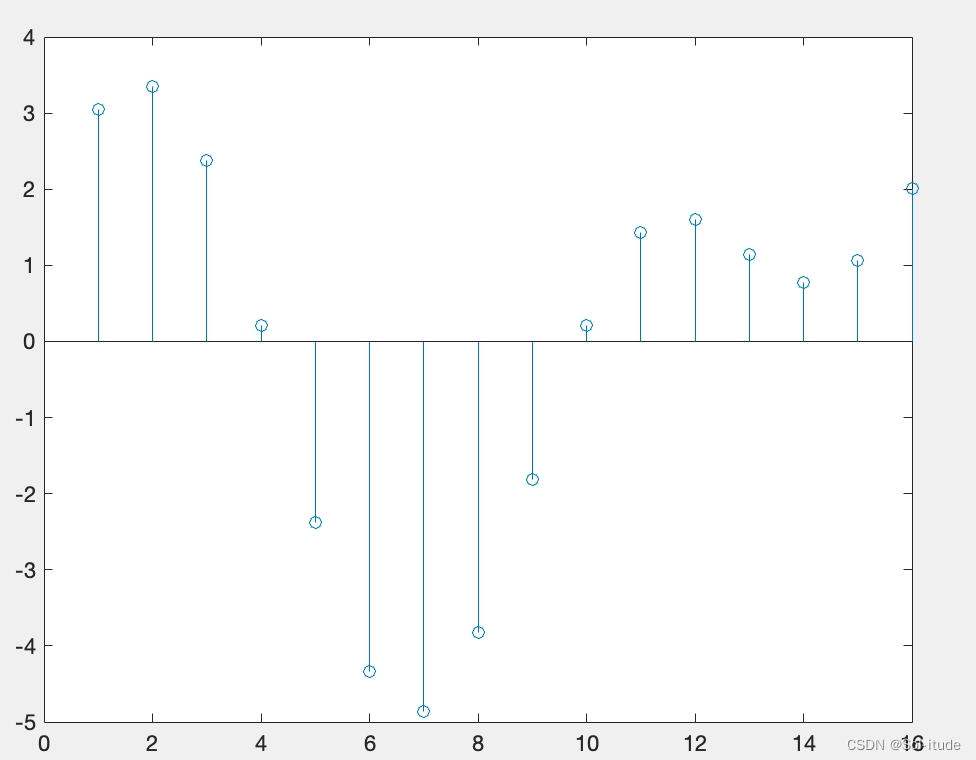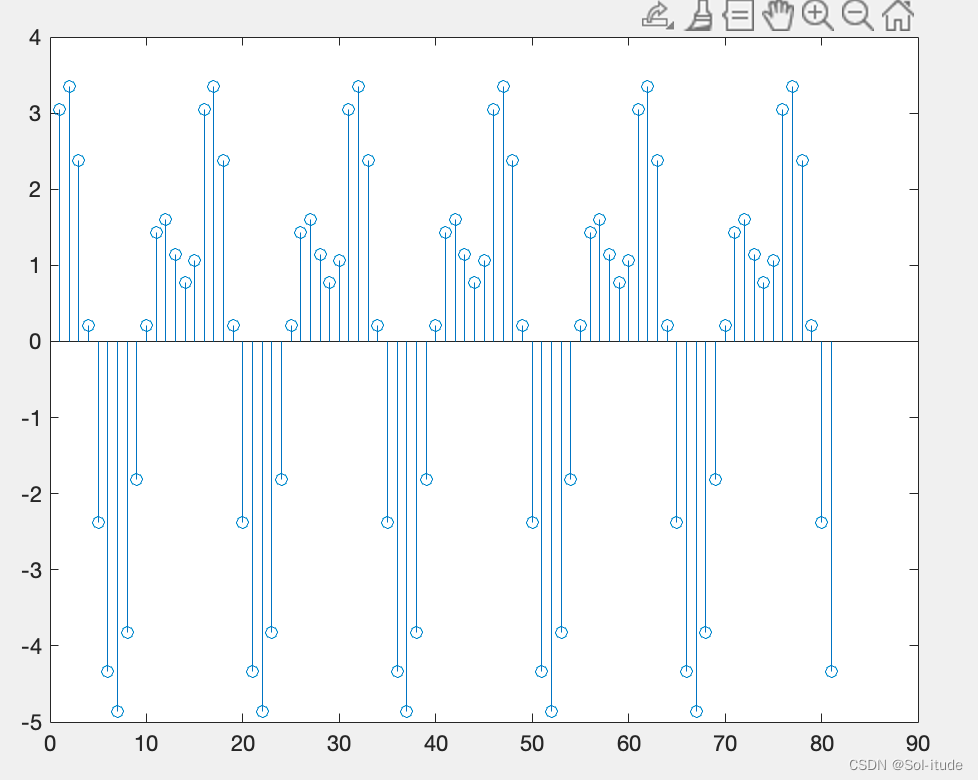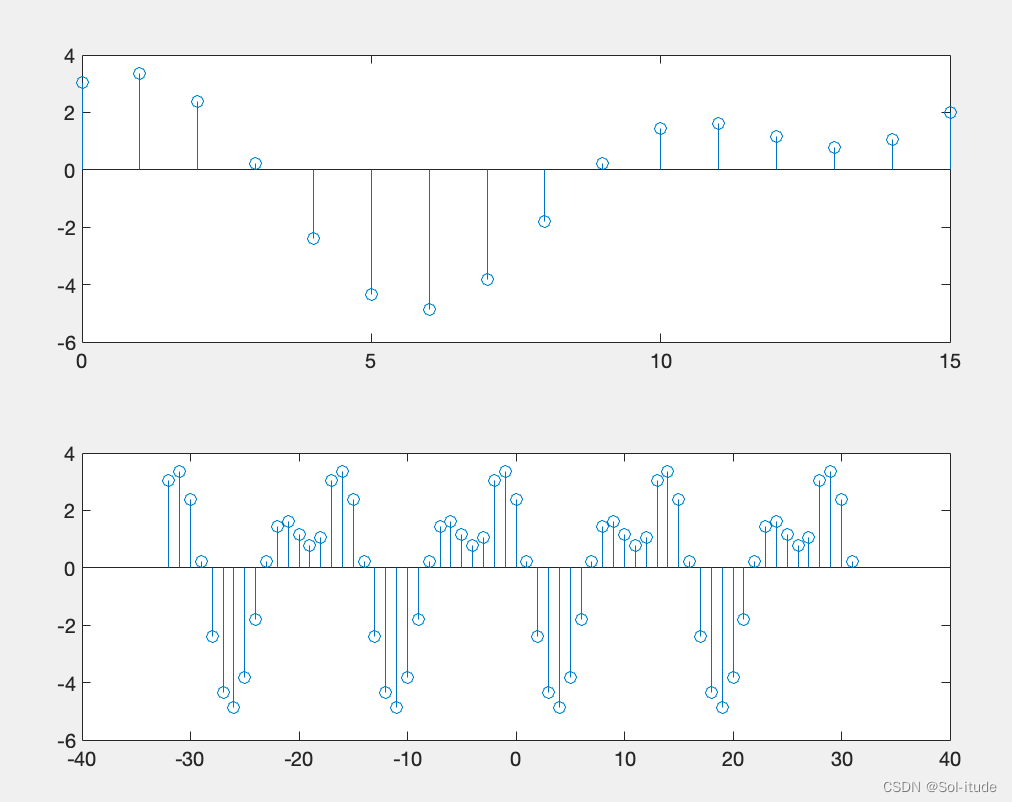原函数
假设我们有这么一个函数
x(n)=3cos(0.125πn+0.2π)+2sin(0.25πn+0.1π) n为0到15的整数
这是他的函数图像,如何将其进行周期化  我在MATLAB中文论坛看到了一个很巧妙的方法
我在MATLAB中文论坛看到了一个很巧妙的方法
1 | b = mod(a,m) |
b = mod(a,m) 返回 a 除以 m 后的余数,其中 a 是被除数,m 是除数。此函数通常称为取模运算,表达式为 b = a-m.*floor(a./m)。mod 函数遵从 mod(a,0) 返回 a 的约定。
### 例子
1 | b = mod(23,5) |
b=3,其实就是一个取余的运算
周期化函数
那么我们转变一下思路,将函数的自变量进行一个延展,再用其周期进行取余,不就变成了周期函数
假如x要以16为周期,延拓4个周期
1 | n2=0:80 |
 就算出来了
就算出来了
完整代码
画函数原来的图 1
2
3n1=0:15;
x1=3*cos(0.125*pi*n1+0.2*pi)+2*sin(0.25*pi*n1+0.1*pi);
stem(x1)
1 | n2=0:80 |
局限性
因为在这道题中,n只提供了正值,就导致负半轴的延拓必须通过修改n的值来实现 例如: 如果想将本文中的序列延拓到四个周期 ,正负各一半,就要这么写
1 | n1=0:15; |
 只能实现有限周期的延拓
只能实现有限周期的延拓




